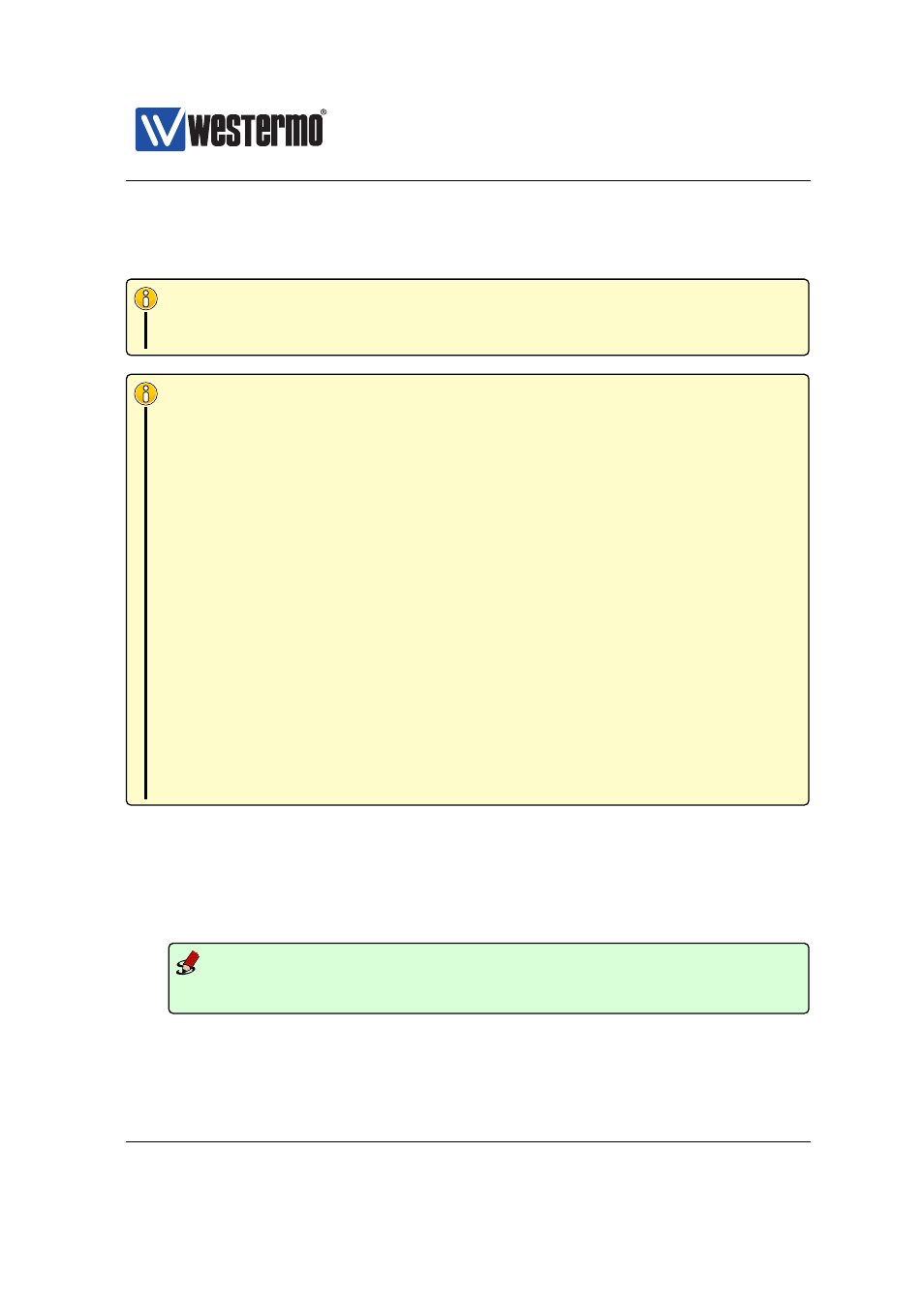Westermo RedFox Series User Manual
Page 85

Westermo OS Management Guide
Version 4.17.0-0
Thus, upgrading the primary (or secondary) system firmware image, or the boot-
loader will be done using the same (pkg) installation file.
Note
If you use TFTP for upgrading with ”pkg” files, make sure your TFTP server
supports large files as defined in RFC2347[
Note
Be aware that upgrade using TFTP may be much slower compared to the FTP
or HTTP methods. This is of particular concern if the link you are transfering
data through has high latency. Some examples are: ADSL/VDSL/SHDSL
links, 3G/4G links or accessing via VPN tunnel.
This is an effect of how the TFTP protocol works.
Every data block
that is sent is ACKed by the other end, and the sender will wait for this ACK
before sending the next piece of data. FTP and HTTP use TCP for transfer,
and TCP has its sliding window algorithm that is much better suited for high
latency scenarios.
An example calculation of approximate transfer time for a high latency
link:
Let’s say the data is 50 Mbyte (PKG files are often larger than this) and the
latency, or round-trip-delay, is: 50 ms.
The standard TFTP block size is 512 bytes.
50 Mbyte divided in 512 byte sized blocks means 102400 blocks.
This translates to 5120 seconds at 50 ms per block, or 1 hour and 25
minutes!
Below you find CLI examples to illustrate upgrading firmware and bootloader
using ”pkg” files:
❼ Upgrading firmware via CLI: Here we upgrade the primary firmware to ’WeOS
4.17.0 from a FTP server (or TFTP server) at 192.168.3.10.:
Example
example:/#> upgrade primary 192.168.3.10 WeOS-4.17.0.pkg
...
❼ Upgrading bootloader via CLI: Here we upgrade to the bootloader from a FTP
server (or TFTP server) at 192.168.3.10.):
➞ 2015 Westermo Teleindustri AB
85